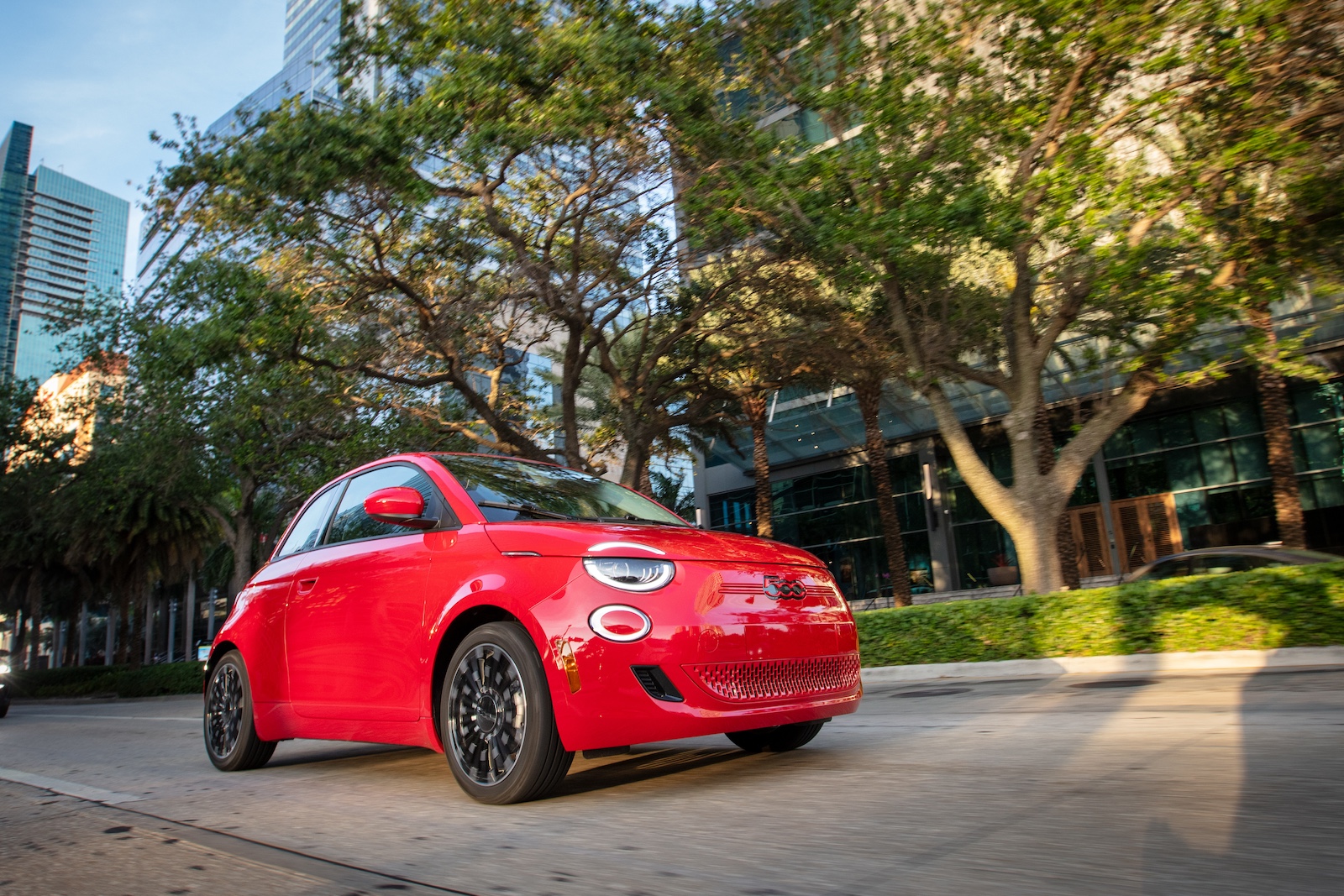
Many people feel as if the language of EVs is an entirely different way of speaking about vehicles — foreign and strange and quite a bit off-putting. According to the Russian psychologist, Lev Vygotsky, much of what we acquire in our understanding of the world is the product of collaboration, moving from inner thoughts to the outer manifestation of speech. So, too, is it with EVs. The language we use to describe EVs and our EV experiences shapes our understanding and the way we help others to perceive transportation electrification.
Through words, we paint pictures that describe our sensory perceptions about EVs, and, in doing so, we influence others around us.
Thoughts and language are interconnected for our larger worlds as well as for discourse about EVs. As we speak about EVs, we retrieve an inner vocabulary of knowledge — it’s transformational in that we’re code switching from the comfortable terminology of internal combustion engines to concepts of all-electric travel. Think of language as the vehicle that we humans use to share our beliefs, experiences, and assumptions about truth. EVs are objects that help us to reconsider everyday life. Together, they become language to communicate about EVs, to analyze and reshape commonly accepted ways of considering not only transportation but technology. We examine our interactions with the environment and burning fossil fuels through the language of EVs. We reflect upon or reproduce cultural norms as we choose ways to describe EVs, occasionally creating new versions of once hard held truths.
As Ash Buchanan, editor for the Benefit Mindset, states, “The future is already here, so one of the best things we can do is to listen for the subtle yet profound shifts in language that support system transformation.” The following list of EV terms reflects such a system transformation. It moves from broad to specific and is not meant to be comprehensive — it is a guide as well as a reminder that we’re sort of speaking a new dialect when we talk about EVs, bringing together thought and language to assist others to embrace all-electric transportation.
Electric vehicles: Electric vehicles (often referred to by the acronym EVs) have a large battery that powers one or more electric motors. The battery needs to be recharged with electricity periodically.
All-electric vehicles: Also referred to as battery-electric vehicles (BEVs), these vehicles are strictly battery-powered. All-electric vehicles do not have an internal combustion engine to power them.
Plug-in hybrid vehicle: These vehicles have a battery and electric motor, but they also have a gas tank and a charging port. Consumers who purchase these want both options of gas and electric power.
Hybrid vehicle: Hybrid vehicles have a gas-powered engine that propels the car and an electric motor that boosts the gasoline engine during acceleration. The battery for this electric motor gets its energy from regenerative braking, which gathers energy that would otherwise be lost in braking.
ICE: This is the acronym for an internal combustion engine, the type of engine most of us grew up with. Many people compare the functions of an ICE vehicle to an EV in order to understand the new technology and develop their own language of EVs.
Regenerative braking: Known colloquially as regen, this is the ability for an EV to send electricity back to the battery when decelerating instead of wasting it. Take your foot off the EV accelerator, and the car will slow; as it does so, it returns energy to the battery. Fancy pants people like to refer to regen as one pedal driving, which gives a totally incorrect impression that an EV has no brake. Avoid saying one pedal deriving — it’s misleading.
Level 1 charging: This kind of charging can be done at home, with no specialized electric modification. A charging cable from the EV is plugged into a regular household outlet, a common residential 120-volt AC outlet. Level 1 chargers can take 40-50+ hours to charge a BEV from empty to 80%. This is slow charging because the outlet only releases a small amount of electricity at a time.
Level 2 charging: Level 2 equipment offers higher-rate AC charging through 240V (in residential applications) or 208V (in commercial applications) electrical service. A licensed electrician installs this service, which reduces charging time by at least half and sometimes more over Level 1 charging. The more power delivered to the EV, the faster the charge.
Level 3 charging: Also called fast charging, Level 3 charging comes from a high-voltage DC supply. This type of charging, which is excellent for road trips, takes 30 minutes on average.
Kilowatt: Usually written as kW, this is the rate at which electricity flows. The ‘W’ is capitalized in recognition of James Watt, who advanced the concept of horsepower. It is a unit of measurement for the rate of power an electrical device or load uses.
Kilowatt-hours: This is a unit of electricity (kWh) and is the measure by which the size of an EV’s battery is gauged.
Battery: The battery pack that powers an EV typically lies along its floor. It is the source of power for an EV — it powers one or more motors. Their size is measured in kWh. With higher kWh capacity, the EV can travel farther than if it has a lower kWh capacity. All mass-market EVs today rely on lithium-ion battery packs to power the electric motors that propel them.
Range: Range refers to the distance an electric or hybrid vehicle can travel before the battery needs to be recharged, measured in miles. EV range varies due to the capacity of its lithium-ion battery, which is the amount of electricity it is able to store. Think of the battery as a kind of gas tank — the larger the battery (gas tank), the longer the range (the energy held by the battery). You can influence your EV’s range by maintaining a consistent speed while driving, moderating use of heater/ air conditioner, slowing a bit if you are a fast driver, and using regen strategically when approaching a stop light or traveling downhill.
Range anxiety: This is a pervasive fear that the EV will run out of charge before a charging station can be reached. Planning alleviates such concerns, as EV drivers can identify charging stations along a trip planner when driving away from home.

Charging connectors: The type of charging connector limits you to charging stations that accept your kind of charger, although adapters are available for after-market purchase. The J1772 connector is a standard used for Level 1 and Level 2 charging; it has 3 larger circles and 2 smaller circles in the connector. For fast charging, the CCS (shorthand for combined charging system connector) adds two large circles at the bottom of the J1772 connection. The CHAdeMO connector has two larger circles at the east and west positions and two smaller circles at the north and south positions. The currently proprietary Tesla connector has 2 larger circles hovering over 3 smaller circles. (Check out this Department of Transportation web page for illustrations of each connector.)
Home charger: Most EV drivers charge at home. They have an exterior outlet into which they plug overnight, with a replenished charge level ready for the new day.
Public chargers: These are chargers that are open to the public and require a special app to engage them. Each charging station has a different rate for charging — some are free for some or all of the charging session, and others charge per hour. At this moment in time in which more public EV charging stations are needed to meet the demands of road trippers, it’s important to practice good EV decorum when using a public charger.
Destination chargers: Destination chargers are public chargers situated at leisure and convenience stops like hotels, supermarkets, restaurants, and golf courses. These are often reserved for guests of the establishment.
I don’t like paywalls. You don’t like paywalls. Who likes paywalls? Here at CleanTechnica, we implemented a limited paywall for a while, but it always felt wrong — and it was always tough to decide what we should put behind there. In theory, your most exclusive and best content goes behind a paywall. But then fewer people read it! We just don’t like paywalls, and so we’ve decided to ditch ours. Unfortunately, the media business is still a tough, cut-throat business with tiny margins. It’s a never-ending Olympic challenge to stay above water or even perhaps — gasp — grow. So …




